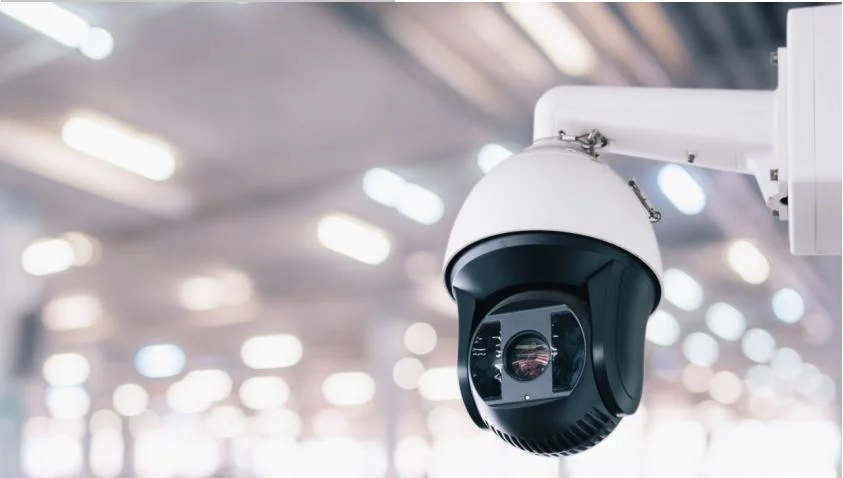Home security has evolved dramatically in recent years, with modern surveillance technology offering unprecedented protection for homeowners. In 2022, the global surveillance technology market was valued at over $130 billion U.S. dollars, reflecting the growing demand for smarter, more reliable home security solutions.
Today’s home surveillance cameras do much more than simply record footage; they actively protect your property with intelligent features that detect threats and alert you instantly. Whether you’re looking to install your first system or upgrade existing equipment, understanding the essential features that make a surveillance system truly effective is crucial.linkhouse Let’s explore what you should look for when investing in protection for your most valuable asset—your home.
High-Definition Video Resolution
When evaluating security options, video clarity should be at the top of your priority list. The difference between identifying an intruder and capturing an indistinguishable blur often comes down to resolution quality. Today’s good home surveillance cameras deliver exceptional clarity that was unimaginable just a few years ago. Resolution options typically range from 720p (HD) to 4K Ultra HD, with each step up providing significantly more detail. While 1080p has become the standard minimum for home security camera systems, 2K and 4K cameras offer superior detail for identifying faces, license plates, and other crucial evidence.
Balancing Resolution with Storage Requirements
Higher resolution means larger file sizes, which directly impacts your storage needs. A 4K camera might provide stunning detail, but it will fill up storage space four times faster than a 1080p camera. Consider your specific needs—front door monitoring might benefit from 4K resolution, while less critical areas might be adequately served by 1080p cameras.
Weather and Lighting Considerations
The best cameras maintain their resolution quality in challenging conditions. Look for CCTV camera options with HDR (High Dynamic Range) capability, which balances bright and dark areas to maintain detail in complex lighting situations. This feature is especially valuable for outdoor locations, where lighting conditions change constantly.
With crystal-clear imagery establishing the foundation of your surveillance system, let’s explore how these cameras perform when darkness falls.
Advanced Night Vision Capabilities
Even the highest resolution camera becomes useless if it can’t see in the dark. Advanced night vision technology ensures your property remains protected around the clock.
Seeing Clearly in Complete Darkness
Modern CCTV camera systems offer two primary night vision technologies: infrared (IR) and color night vision. IR night vision, the most common type, uses infrared LEDs to illuminate the scene invisibly, producing black-and-white footage. Color night vision, a newer technology, maintains color imaging in low-light conditions, offering better detail and identification capabilities.
Optimal Range for Complete Coverage
Night vision range varies significantly between camera models. Budget cameras might offer 15-30 feet of visibility, while premium options can see clearly at 100+ feet. Consider your property’s layout when evaluating this feature—larger properties generally require cameras with extended night vision range.
Smart Lighting Integration
Many advanced cameras now integrate with smart lighting systems, activating floodlights when motion is detected. This hybrid approach provides color recording in previously dark areas while serving as an active deterrent to potential intruders.
With 24-hour visibility secured, let’s examine how intelligent detection capabilities can transform your security experience.
Intelligent Motion Detection with AI Technology
Standard motion detection often creates a frustrating experience filled with false alarms. AI-powered detection represents a significant upgrade that makes your system smarter and more reliable.
Person Detection vs General Motion Detection
Basic motion detection triggers recordings whenever any movement occurs—including swaying trees, passing cars, or wandering animals. Advanced CCTV cameras for home use incorporate AI algorithms that can distinguish between people, vehicles, animals, and irrelevant movement, dramatically reducing false alerts.
Zone-Specific Monitoring
The ability to define specific monitoring zones allows you to focus on critical areas like entryways while ignoring high-traffic areas. This customization ensures you’re alerted to activity that matters while avoiding notification fatigue from routine movement.
Self-Learning Algorithms
Premium home security camera systems employ machine learning to improve detection accuracy over time. These systems analyze patterns to better understand normal activity at your property, becoming increasingly precise at identifying unusual behavior that requires your attention.
With smart detection filtering out irrelevant alerts, let’s explore how remote access capabilities keep you connected to your home from anywhere.
Comprehensive Remote Viewing and Control
Modern security demands flexibility to monitor your property regardless of your location. Remote security monitoring capabilities transform how you interact with your security system.
Mobile Application Functionality
A robust mobile app serves as the command center for your security system. Look for applications that offer intuitive interfaces, real-time alerts, and live viewing capabilities.The best apps allow you to check on your property with just a few taps, whether you’re at work or on vacation.
Multi-Device Synchronization
Your surveillance system should work seamlessly across all your devices. Quality systems support synchronized access across smartphones, tablets, and computers, ensuring you’re never without access to your cameras.
Pan-Tilt-Zoom Controls
Remote PTZ (pan-tilt-zoom) functionality transforms static cameras into flexible monitoring tools. This feature allows you to reposition your view remotely, zooming in on suspicious activity or panning to follow movement across your property—all from your smartphone.
With remote visibility established, let’s consider how your system stores this valuable footage.
Cloud and Local Storage Options
Even the most advanced camera becomes useless if its footage isn’t properly stored and accessible when needed.
Cloud Storage Security and Reliability
Cloud storage offers convenience and protection against physical theft of storage devices.Look for systems with encrypted cloud storage to protect your footage from unauthorized access. Many providers offer tiered plans based on retention periods, typically ranging from 7-30 days.
Local Storage Alternatives
Local storage options include SD cards in individual cameras or dedicated recording devices like NVRs (Network Video Recorders). These solutions avoid monthly subscription costs but require proper setup to ensure footage isn’t lost due to equipment failure or theft.
Hybrid Storage Solutions
The most comprehensive approach combines both storage methods. Hybrid systems automatically back up critical footage to both locations, ensuring you maintain access even if one storage method fails.
With your footage securely stored, let’s examine how two-way communication enhances your security capabilities.
Two-Way Audio Communication
Modern surveillance systems do more than watch—they enable direct interaction with visitors and potential intruders.
Clear Communication Quality
Look for cameras with noise-cancellation technology and powerful speakers that ensure clear audio even in outdoor environments. Quality microphones should capture voices from a reasonable distance, allowing effective communication without shouting.
Deterrence Through Direct Interaction
The ability to speak through your cameras serves as a powerful deterrent. Warning potential intruders that they’re being recorded and that authorities have been contacted often prevents crime before it occurs.
Family Communication Benefits
Two-way audio extends beyond security applications. Many families use this feature to communicate with children arriving home from school or to provide instructions to service providers when they can’t be present.
With communication capabilities covered, let’s explore how physical durability ensures your investment lasts.
FAQs
What should I look for when buying home security cameras?
When purchasing a security camera system, prioritize resolution quality (minimum 1080p), reliable power sources, weatherproof construction for outdoor models, and decide between monitored and unmonitored options. Also, consider whether you prefer DIY installation and whether wired or wireless cameras better suit your needs and property.
What factors matter when installing security cameras?
Cover all entry points, your driveway, and street-facing areas. Ensure cameras only monitor your property to respect privacy laws. Make cameras visible as deterrents, securely mount all equipment to prevent tampering, and confirm your system has adequate storage capacity for your recording needs.
How do security cameras differ from surveillance cameras?
Security cameras primarily record footage for later review, while surveillance cameras are designed to alert authorities when criminal activity occurs. Surveillance systems typically incorporate AI technology for active monitoring and are commonly found in industrial facilities and densely populated areas requiring constant vigilance.
Creating Your Comprehensive Protection Plan
Selecting the right surveillance system requires balancing technology, budget, and specific security needs. The best system for your home combines high-resolution imaging, intelligent detection, and reliable storage with easy remote access. As technology continues advancing, today’s premium features will become tomorrow’s standards.
The peace of mind that comes from knowing your home is protected around the clock with cutting-edge technology makes this investment in your family’s security invaluable. Remember that the most effective surveillance system is one that fits seamlessly into your lifestyle while providing constant, reliable protection.










 /home/u448362301/domains/theexpotab.com/public_html/wp-content/themes/foxiz/templates/popup.php on line 167
/home/u448362301/domains/theexpotab.com/public_html/wp-content/themes/foxiz/templates/popup.php on line 167